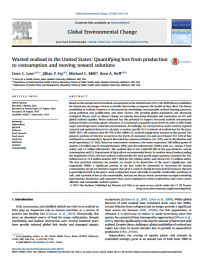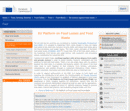Supportive Policy Environment for Urban Wholesale
Policy is a key entry point to stimulating change that brings about reduced food loss and waste (FLW). Two policy examples are given that illustrate the importance of wholesale fish market development in the context of FLW prevention.
Policy Solutions in the United States
It is estimated that 40–47% of the U.S. seafood supply was lost annually from 2009 to 2013. Lost food has important implications for public health, natural resource use, and resiliency in the face of climate change and the issue is gaining traction among a wide range of stakeholders. The ideal way to reduce loss of seafood is through prevention. At seafood distribution level, solutions include tracking waste, provision of storage and freezing information on packages and accurate information to consumers about when seafood becomes unsafe, and about how and when to freeze seafood.
Use of Cold Chains for Reducing Food Losses in Developing Countries
Wholesale markets are an integral part of cold chains. The cold chain is a well-known method for reducing FLW, and has long been promoted by established industry-focused organizations such as the International Institute of Refrigeration, the World Food Logistics Organization and the Global Cold Chain Alliance. The required infrastructure and investments in needed facilities, equipment and management skills, however, are generally lacking in developing countries.
Policy makers in the agriculture, energy, education and food sectors must work together to promote the use of cold chain technology, improve logistics, maintenance, services, infrastructure, education and management skills, and create sustainable markets for the design, use and funding of cold chains for reducing perishable food losses. There is a need to promote awareness and local, national, regional and international capacity building and training of trainers in the proper use of the cold chain. Once the cold chain is in operation, regular access to technical training on cold chain management and cold supply chain logistics will be needed by both the public and private sector.
Key Publications
Nearly half of edible U.S. seafood supply was lost annually between 2009-2013. This publication discusses the need for lost seafood to be monitored as part of the seafood supply chain. | |
Use of Cold Chains for Reducing Food Losses in Developing Countries The use of cold storage is not one-size-fits-all, but is an important component of an agricultural value chain. Details of how to integrate cold chains and how it can reduce food losses are included. |
More Resources
More Resources
31 October 2023
01 January 2020













